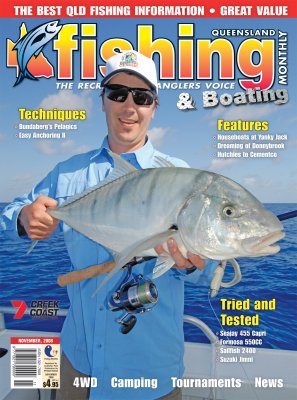Bundaberg Pelagics Part 1: Tuna by Josh Hodges
 This is the first part in a three part series that will explain how to catch pelagic fish around Bundaberg. While this article concentrates on Bundaberg and its surrounds these techniques can be used to catch these fish all along the Queensland coast.
This is the first part in a three part series that will explain how to catch pelagic fish around Bundaberg. While this article concentrates on Bundaberg and its surrounds these techniques can be used to catch these fish all along the Queensland coast.
In Bundy the first species of tuna that arrive in numbers is the mackerel tuna, showing up in the southern waters at the end of August and the beginning of September. They will slowly move north throughout the season and should reach 1770 by late September.
LOCATION
When chasing these speed demons, there aren't any specific spots you can go to and be assured of catching a tuna, as they are a pelagic fish and move all over the ocean. A good way to spot tuna feeding is to scan the horizon for bird activity; wearing polarised sunglasses will reduce the glare coming off the water and make the birds easier to see. Another sign of fish feeding is the big splashes made when they chase and engulf the frightened baitfish that have been schooled up by the fish. Calm days help when looking for tuna chopping the surface because if there are white caps it gets difficult trying to distinguish between the two.
At the start of the season tuna are spooked very easily and it is hard to cast at the school before they sound. A good way that will often get around this problem is to quietly motor to the front of the school and cast towards the fish. Practising the distance of your casts is also very important because at the start of the season you need to be able to cast 80m and if the boat goes much closer than that the fish will become aware of your presence, stop feeding, and sound away from the boat.
Tuna will usually feed into the wind and this is one way of estimating which direction they are moving. Another way is to sit back for a minute and watch the direction that the birds above are moving. This will be the direction the fish underneath are travelling.
Once you have figured the direction, cast your metal slug towards the leading birds of the flock as this is where the bigger mac tuna will be. Also, if you cast at the front of the school and let your lure sink for 4-6 seconds, and then start your retrieve, you could pick up the bigger longtail tuna (northern bluefin tuna) that are often swimming underneath the mac tuna, feeding off the scraps.